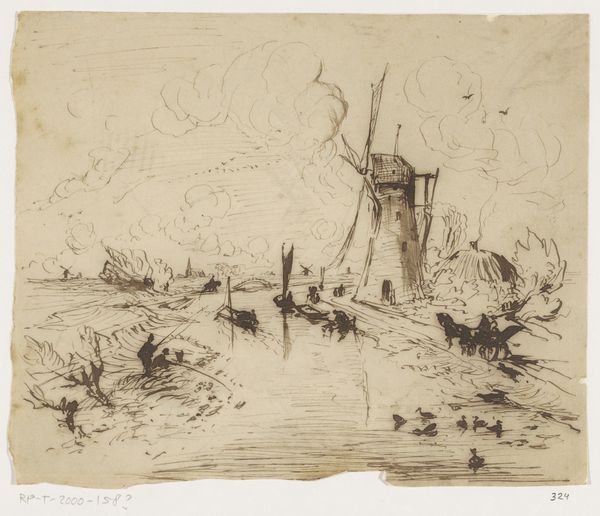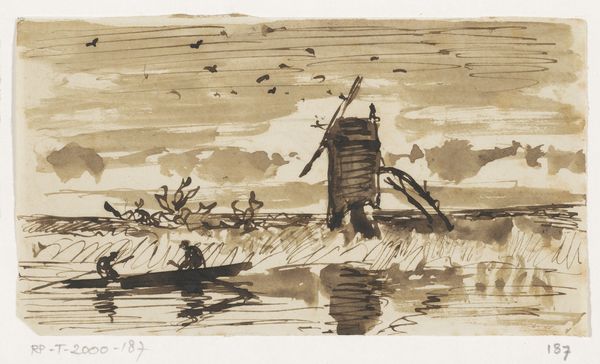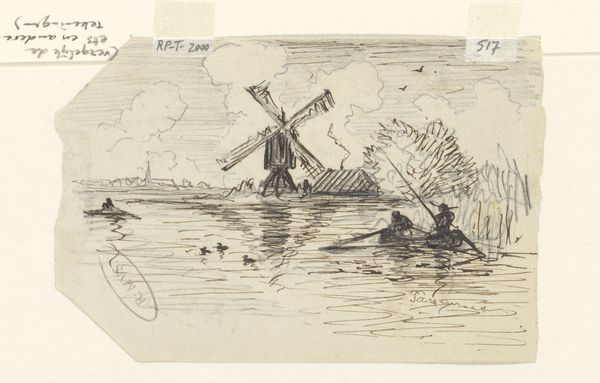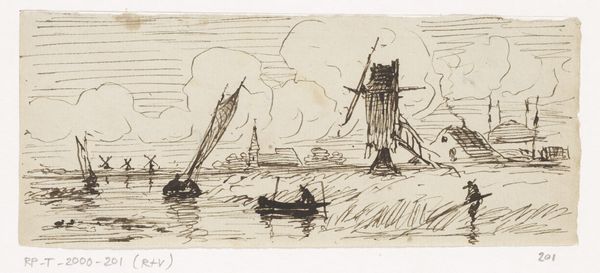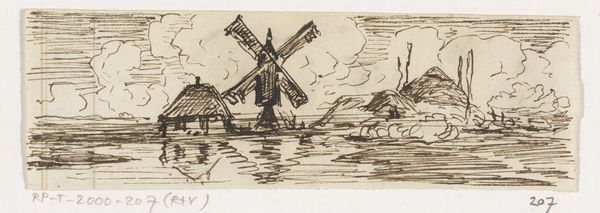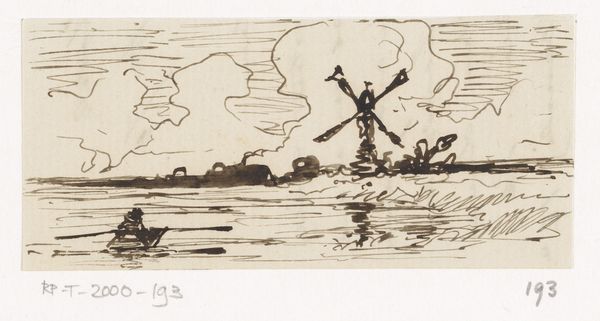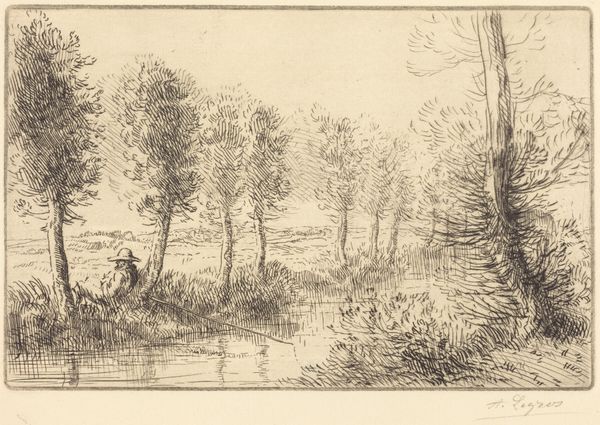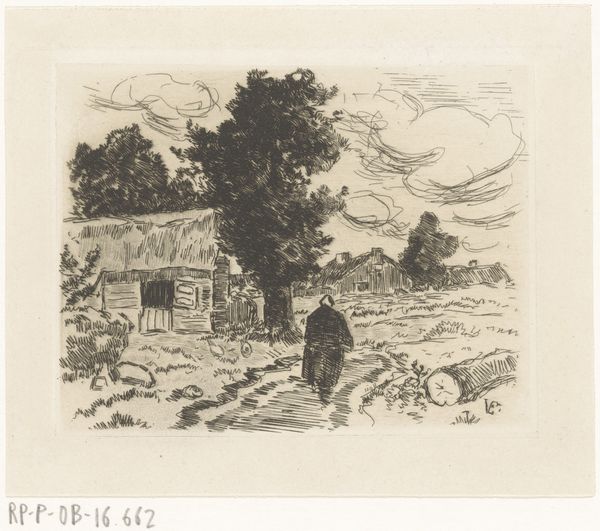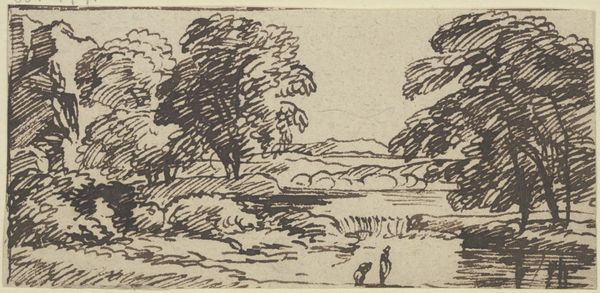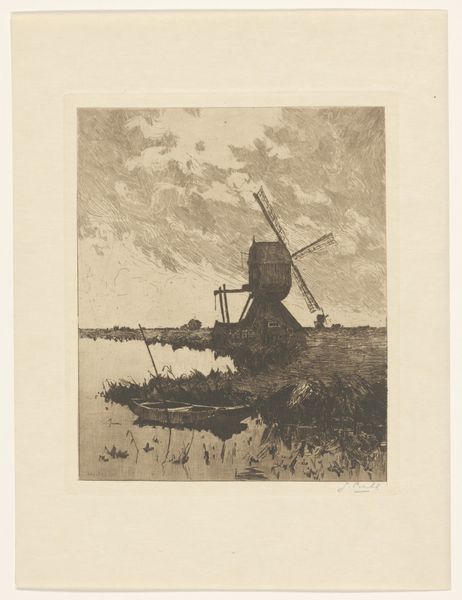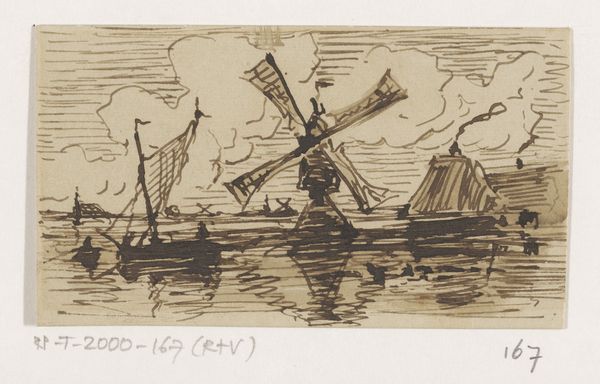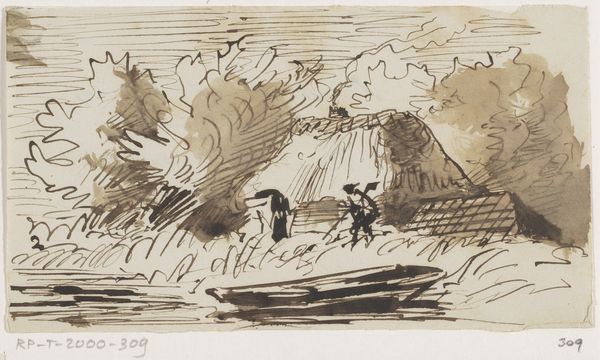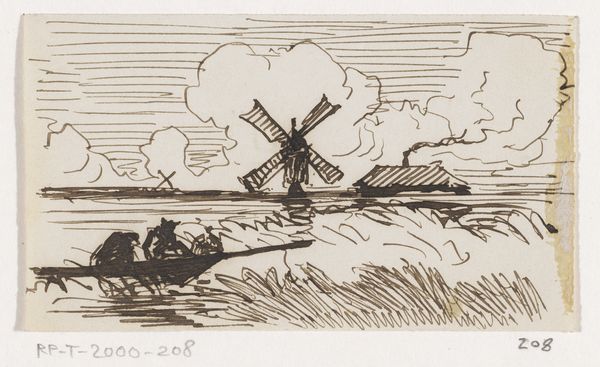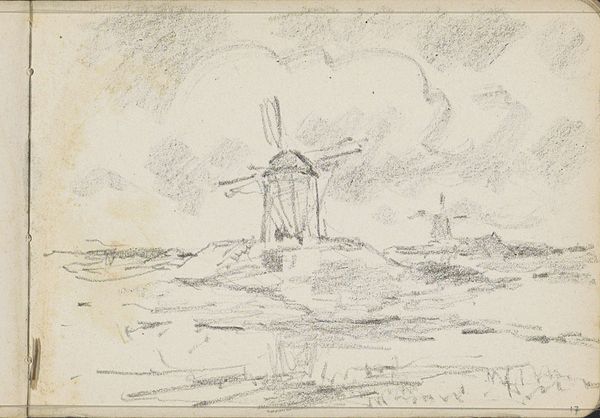
drawing, plein-air, watercolor, ink
#
drawing
#
pen sketch
#
plein-air
#
landscape
#
watercolor
#
ink
#
romanticism
#
watercolour illustration
#
sketchbook art
Dimensions: height 92 mm, width 115 mm
Copyright: Rijks Museum: Open Domain
Curator: Here we have "Rivierlandschap," or "River Landscape," rendered in ink and watercolor by Johannes Tavenraat in 1843. It resides here at the Rijksmuseum. Editor: Immediately striking is its ephemeral quality; it feels almost dreamlike, sketched quickly from life. The restrained palette reinforces this feeling. Curator: Indeed. This captures a specific trend of the time, artists seeking the authentic and immediate experience of nature through plein-air sketches. The Romantic movement certainly embraced this more spontaneous artistic expression. Editor: Observe the interplay between the meticulous lines defining the windmill against the almost indistinct forms of the foliage. Tavenraat has used contrasting approaches within a unified field. The human element in the boat certainly contributes a pastoral tranquility. Curator: Yes, and the windmill itself anchors the composition. Consider the sociopolitical symbolism. Windmills were crucial to Dutch identity—symbols of industry, of man controlling nature. They appear quite often throughout the art of the Dutch Golden Age as well. Tavenraat inserts it almost as a landmark in this river-centered social landscape. Editor: The atmospheric perspective also commands our attention. Note how Tavenraat employed very diluted washes to define the distant sky and clouds, contrasting this application with the richer inks of the foreground figures in the boat. These choices cause recession but it doesn't fade out so much as recede gently with subtle tone gradations. Curator: The materiality of drawing and watercolour are very important. He is really emphasizing those unique tonal capabilities of the media themselves to give that immediate feeling, like capturing a fragment of the scene. It marks the place and purpose of artistic engagement during that period. Editor: Considering the delicate application of watercolor wash across the entire image—a unified surface punctuated by the dark pen sketch elements—creates a beautiful tension between finish and incompletion. Curator: I agree, this small work provides such interesting insights into the period's shifting aesthetic and cultural priorities. Editor: It serves as a good case study, that although seeming merely descriptive and representational, landscape art nevertheless is charged with politics and social significance.
Comments
No comments
Be the first to comment and join the conversation on the ultimate creative platform.
